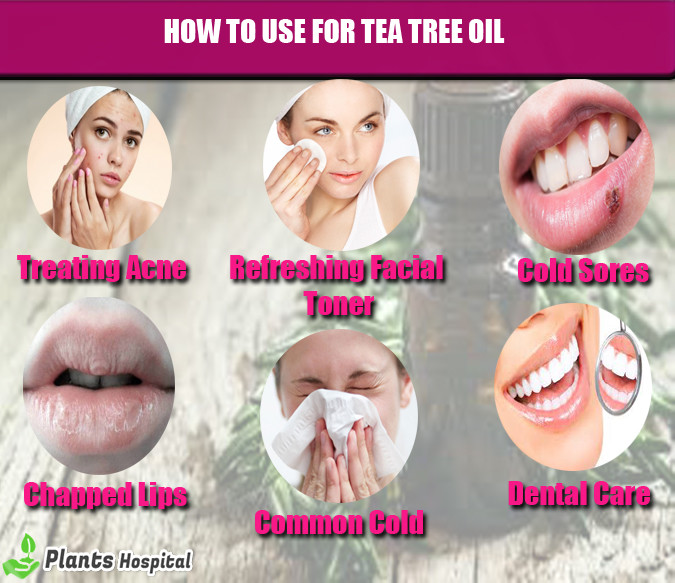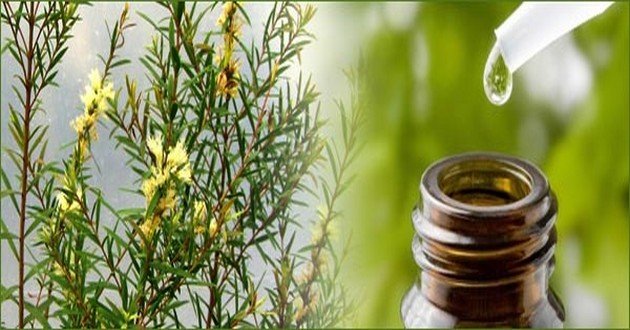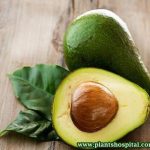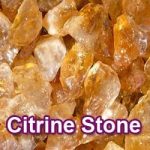Australia, one of the world’s most popular travel destinations, has many claims to fame. On the natural health scene one of the most valued exports from “down under” is an essential oil from the Melaleuca alternifolia tree commonly known as tea tree oil.
Once found only in Southeastern Australia, tea tree oil is fast becoming a global product. There are even plantations springing up in California. The trees grow to a height of approximately 20 feet, and while the whole tree is valued, only the leaves are used to produce the medicinal oil.
Table of Contents
Introduction to Tea Tree Oil
The first official report of its use by a doctor was in the Medicinal Journal of Australia in 1930 where a Sydney surgeon wrote of its wound healing and antiseptic properties.
During World War II, tea tree oil was added into machine “cutting” oils in munitions factories in Australia. This is said to have greatly reduced the number of infections due to abrasions on the hands of workers caused by the metal filings and turnings (slivers).
Editor’s Pick:
What is Tea Tree Oil?
Tea Tree Oil is a volatile essential oil obtained by steam distillation of freshly harvested foliage of Melaleuca Alternifolia, one of about 200 species of Melaleuca indigenous to Australia. The oil is clear, colorless to pale yellow, with a characteristic odor.
Where Can You Use Tea Tree Oil?
There has been created as a handy guide that you can keep in your home, cottage, office, or even your camper! You may be surprised how many ways a small bottle of tea tree oil can be used. If you are unsure about what kind of tea tree oil to look for, I recommend a 100% tea tree oil from a trusted supplier.
You should be able to find this useful essential oil at your local natural health retailer, pharmacy, or grocery store. To further assist you in overcoming any health challenges you identify while reading this book, I have included nutritional supplement recommendations related to each condition or symptom.

First, it acts as an antifungal to get rid of basic fungal infections. Next, it has anti-viral properties to help you fight off infections. Part of the anti-viral properties of tea tree oil includes its work as an anti-bacterial, which kills bacteria and prevents it from growing. Due to these rather spectacular benefits, tea tree oil can be used in a variety of ways.
1. Treating Acne
Acne is the most common skin problem in North America. One in 4 visitors to a dermatologist is there because they want help for this skin disorder that can present itself as pimples, blackheads, and whiteheads, or as inflammatory acne with accompanying pustules and cysts.
Inflammation occurs when the follicle (pore) wall is broken and white blood cells move in to fight bacteria. Acne breakouts frequently appear on the face, but can also be seen on the chest, back and shoulders.
Acne generally begins at puberty because the production of androgens, hormones related to sexual development, cause a change in the size and activity of the sweat and sebaceous glands.
Acne can be more than a cosmetic problem; it can cause emotional stress and can have a profound impact on self-confidence. Tea tree oil is a naturally potent ally in the fight against acne.
2. Tea Tree Oil Remedy for Skin
It is a natural antiseptic and antibiotic. It has been shown to lower the bacteria level and inflammation of acne as effectively as topical pharmaceutical medications without negative side effects such as dry skin, redness, and peeling.
What You Need:
- 1 oz. Aloe Vera gel
- 3 drops Apothecary Extracts Tea Tree Oil
- 2 drops of raw honey
- Lip balm tube or small tin storage container
Mix It: Use a wooden applicator to stir all ingredients together until blended and store in a tin storage container.
Apply It: Place a small amount of the spot remover on the pads of your fingers and apply it to acne spots.
3. Refreshing Facial Toner
What You Need:
- ¼ cup natural witch hazel
- 7 drops Apothecary Extracts Tea Tree Oil
- 1 cup room temperature green tea
- 3 drops jasmine essential oil
Mix It: Make the cup of green tea by pouring hot water over tea bags. Steep tea until it has cooled to room temperature then discard bags. Add witch hazel to tea and then pour into a storage bottle with a sealable lid. Add in oils and shake well to blend.
Apply It: Tip the bottle over a cotton ball to wet it and apply it to the face and neck area. Be sure to wash and dry face first.
4. Cold Sores (Herpes Simplex Virus 1)
Cold sores typically appear on the lips, or skin near the mouth, as single or multiple small bumps filled with fluid, within three to ten days after exposure to the herpes virus.
They can last up to, or longer than, three weeks. Cold sores can spread and grow and are painful, itchy, and irritating. Unfortunately, the virus remains permanently in the body, which is why some people are prone to frequent outbreaks.
It is estimated that 80 percent of the population have been exposed to herpes simplex 1 and have antibodies against it. Strengthening immunity is important in preventing outbreaks.
5. Chapped Lips
Dry, cracked lips can be caused by a dry environment, excessive licking, or reaction to irritants in cosmetics or skin treatments. Chapped lips can be painful and unattractive and can interfere with basic day-to-day activities such as eating, talking, and kissing!
It can speed the healing of cold sores. Apply a few drops on a cotton swab as soon as you feel the tenderness and itching that usually precede a cold sore. If the cold sore is already in full “bloom” apply a few drops of tea tree oil to the infected area twice a day.
What You Need:
- Superfine sugar
- 5 drops olive oil
- 9 drops Apothecary Extracts Tea Tree Oil
- Airtight container
- 2 drops peppermint oil
Mix It: Combine ingredients until a paste form and store it in an airtight container.
Apply It: Rub the paste over dry lips with 2 fingers in a circular motion, massaging for up to a minute then wipe off with a warm damp cloth.
6. Dental Care of Tea Tree Oil
The mouth is a breeding ground for bacteria. It is warm, moist, and full of nooks and crannies where bacteria can hide, producing bad breath, promoting gum disease and tooth decay.
Sore throats, canker sores, and mouth ulcers are all too common. It is not to be swallowed, so any oral use must be approached with care. Although some natural health practitioners recommend adding tea tree oil to your toothbrush, mouthwash, or rinsing with it, I suggest using a commercial tea tree oil toothpaste or mouthwash rather than risking ingestion of too much of this potent oil.
Brushing the teeth regularly and flossing can do a lot for mouth health, as can regular rinsing with hot water and salt, or natural mouthwash. A balance of good nutrition can include immune builders such as Vitamin C and L-Lysine, and a good echinacea and zinc lozenge can improve a sore throat.
Tea Tree Oil Toothpaste
What You Need:
- 3/8 cup boiling water
- 11 drops peppermint essential oil
- ¼ cup bentonite clay (powder)
- ¼ tsp. sea salt
- 10 drops Stevia
- 6 drops Apothecary Extracts Tea Tree Oil
Mix It: Add clay and sea salt to a mixing bowl and pour boiling water over it, mixing with a hand mixer. Slowly add Stevia and essential oils, tasting ever so often until you get the taste you want. Add to a glass jar or pot with an airtight lid.
Apply It: Dip the toothbrush into the paste until covered and use it as normal. Do not swallow this toothpaste, it should not be ingested.
Editor’s Pick:
7. Ear Infections/Earaches of Tea Tree Oil
Approximately 75 percent of all children suffer from ear infections by the age of three. There are two types of ear infections that doctors encounter in their practices, otitis externa, and otitis media.
Swimmer’s ear, also known as otitis externa, affects the outer ear and can include symptoms such as slight fever, discharge, and pain. A middle ear infection, otitis media, is very common in infants and children and is an infection located behind the eardrum.
This is where the small bones of the ear are located. If a bacteria or virus invades this region, inflammation and fluid build-up, giving the sensation of pressure. Symptoms include earache, high fever, sharp, throbbing pain, and the feeling of fullness in the ear.
Tea Tree Oil Remedy for Ear Infections:
- For otitis externa, mix 5 drops of tea tree oil in ¼ cup of warm olive oil.
- Drop a small amount gently into the ear, tilting the head to one side for a minute.
- Use small cotton ball or swab, gently, to absorb the oil. Repeat until improved.
8. Head Lice/Scabies
Scabies is a parasitic disease of itch mites that burrow under the skin and lay eggs, causing a persistent, itchy rash. Lice, on the other hand, live on an individual or in the clothing that they wear.
Scabies mites are transmitted from person to person, usually from prolonged contact whereas lice are transmitted from person to person and also from bedding and clothing.
Scabies is characterized by intense itching, skin burrows, and occasionally secondary infections with the most severe itching occurring at bedtime. The lesions and burrows are seen in the finger webs, wrists, beltline, groin, areola in females, and lower buttocks. Lice may produce tiny black specks in the patients’ undergarments and nits may be seen at the base of the hair shafts. Mild excoriations may be seen from scratching.
Tea Tree Oil Remedy for Head Lice
For Head Lice:
- Add 5 drops of Tea Tree Oil to 1 ounce of shampoo.
- Massage into hair, leave on for 10 minutes
Rinse:
- Repeat once a day until eggs and lice are gone.
- This shampoo can also be used in the other areas affected by lice or scabies.
- It may be applied directly, twice a day, to an area affected by scabies, but it could irritate people with sensitive skin.
- Consult a medical practitioner if an improvement is not seen within 10 days.
9. Sinusitis
Sinusitis is an inflammation of the nasal sinuses. The most common cause of sinusitis is a viral upper respiratory infection, although bacteria, fungi, and allergic reactions may also be responsible.
Any factor that creates swelling of the nasal tissues, resulting in obstruction and the lack of proper drainage of the area, will often lead to a sinus infection. Chronic sinusitis is most common in people with allergies, and dental infections account for 25 percent of chronic maxillary sinusitis.
Swimming and diving, and injury to the area (especially a broken nose affecting the frontal sinuses) are other precipitating factors.
Tea Tree Oil Remedy for Sinusitis
Add 5 to 10 drops of tea tree oil to a pot of heated water. Drape a towel over your head. Lean over the pot and inhale gently. At night, add 10 drops to a vaporizer.
- Add 5 to 10 drops of tea tree oil to a pot of heated water.
- Drape a towel over your head.
- Lean over the pot and inhale gently.
- At night, add 10 drops to a vaporizer.

Gentle Cleansing Shampoo
What You Need:
- ¼ cup liquid Castile soap
- ½ tsp. Apothecary Extracts Tea Tree Oil
- 3 drops jojoba oil
- ¼ cup distilled water
- Flip cap shampoo bottle
Mix It: Pour all ingredients into a flip cap bottle and shake well to blend. Store bottle in the shower for up to 2 months.
Apply It: Tilt the bottle over your head until a quarter-sized amount appears and work into a rich lather. Rinse thoroughly and repeat as necessary.
Side Effects
With so much science to back up the many medicinal and household uses of tea tree oil, you might wonder why it doesn‘t get more mainstream attention. Despite the strong antibacterial properties of the Melaleuca tree extract, many physicians and pharmacologists are in favor of more widely accepted treatments such as antibiotic pills.
There is a growing concern regarding antibiotic resistance due in part to overprescribing. Therefore more people are looking for more natural methods of killing bacteria.
As beneficial as tea tree oil can be for skincare, dental care, and even household cleaning, it should never be ingested. It is meant only for external use. If you have a known allergy to tea tree oil you should avoid any kind of contact with it.
Those without allergic reactions may also experience some side effects, but it is extremely rare. Because tea tree oil is applied topically to the skin, hair and in the mouth (in mouthwash or toothpaste), rashes, itching, and burning can occur. The likelihood of experiencing any negative side effects can be reduced by using an all-natural tea tree oil such as Apothecary Extracts Tea Tree Oil which has been tested for purity and potency.








